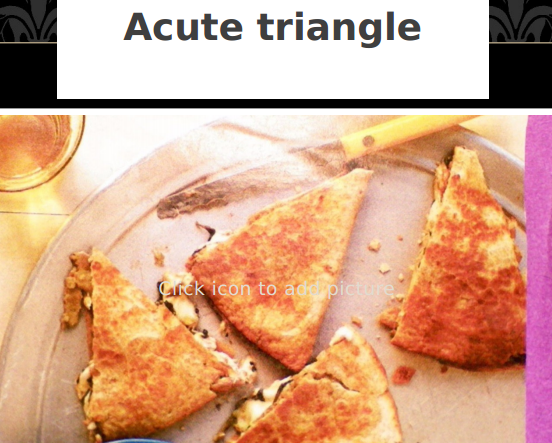Assessment comes in many forms and definitely has a place in education. However, that does not mean that it always has to be formal, standardized, and boring. Assessing is simply evaluating the ability of our students to master specific concepts.
Last week, our fourth grade math teacher, Mrs. Cummings, asked me to help her find some creative ways to assess and review geometry with her students. After discussing, we decided that there would be three parts to this activity.
The first part of the assignment required students to find a real world example of a specific geometry term. She gave each student a different term and then asked them to take a picture and email it to her. Before allowing them to begin, she explained that their examples could not be obvious or expected. For example, the student that received octagon could not take a picture of a stop sign and a student with sphere couldn’t take a picture of a ball. They had to be creative and think outside of the box.
We were so impressed with the pictures that the students brought back. They were very creative and took pictures of everyday examples of geometry. Below are some examples of my favorites.
The second part of the assignment was the true assessment. Mrs. Cummings wanted to find out if her students really knew the vocabulary terms and which ones were still giving them difficulty. We wanted the assessment to be fun but also meaningful and engaging.
After discussing several thoughts and ideas, we decided to put together a QR Scavenger Hunt. First, we made up ten riddles (example: You've scanned your first QR code and now you are hooked, go the place where you check out a book). Next, we created a website on Weebly and created the QR codes using The QR Code Generator. This morning I placed the clues in the correct locations and downloaded ScanLife on all of the tablets that we were using.
The students scanned the code and went to the location that was described by the clue. They found 3 numbered definitions at each place. They had a list of words and were asked to put the correct number by the correct term.
This was our first attempt at a QR code scavenger hunt so I was a little nervous. I wanted it to be successful so others would see how effective this type of learning and assessment can be if used correctly. And I’m happy to report that it was a huge success!
While the students were searching for clues, I heard them saying things like, “This is so fun” and “I love this”. They were also engaged in meaningful discussions about the terms and why they felt the answer that they had chosen was correct. As I listened to them, I realized that Mrs. Cummings would be gaining the same information she would have gained on a formal assessment. It would be obvious which students had mastered the content and which students needed to be retaught.
After the activity was over, I walked into Mrs. Cummings's room and heard one student ask, “Can we work on this during recess?” Success! Then I went into the teacher’s lounge and a teacher asked me what we had done and what something like this might look like for younger students. Be still my heart! The teacher had noticed how engaged and excited the students were while they were learning. You couldn’t help but want to know what they were doing and more importantly, what they were learning.
Next week, Mrs. Cummings’s students will be blogging about their experience today. This is an important piece to the learning because it gives them a way to reflect and find meaning in what they have learned.
I wanted to write about this activity because I feel like it is a true example of how we can be creative when teaching and assessing our students. Meeting them where they are and providing meaningful activities provide the opportunities for real learning to take place.
I am so thankful that Mrs. Cummings thought outside of the box and wanted to do something creative with her students. The learning that took place today was engaging, meaningful, and inspiring.
Finally, I would just like to encourage you to step outside your comfort zone as an educator. Try something new and don’t be afraid to fail. Your students deserve to learn in a way that is meaningful to THEM. So step out on that limb knowing that even if it breaks, you will just climb back up the tree and try again!









